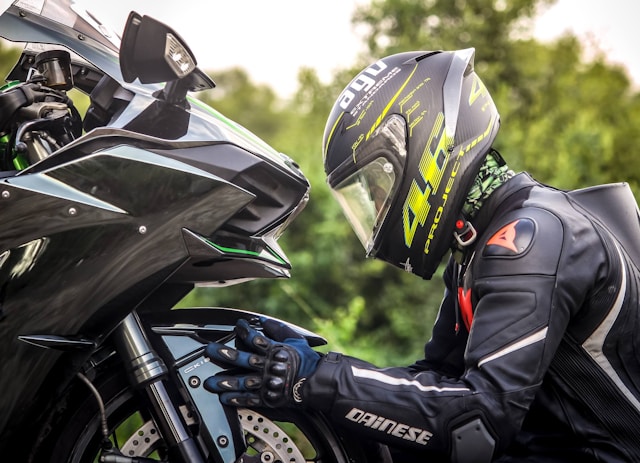Introduction
The cafe racer motorcycle, with its minimalist design and emphasis on speed, has captured the imagination of riders and enthusiasts for decades. Originating in the 1960s, these bikes have evolved significantly, blending classic aesthetics with modern technology. This article explores the journey of cafe racers from their inception to contemporary iterations.
The Birth of Cafe Racers
Cafe racers emerged in the United Kingdom during the late 1950s and early 1960s. Young motorcyclists, known as “rockers,” modified their bikes to achieve higher speeds, inspired by the desire to race between cafes. These early bikes were characterized by their lightweight frames, low handlebars, and elongated fuel tanks, designed to enhance speed and agility.
“Riding a cafe racer was all about the thrill of the open road and the freedom it represented,” recalls veteran rider Jack Thompson. The iconic Triumph Bonneville, Norton Commando, and BSA Gold Star were among the popular models that defined this era.
The Golden Age
The 1960s and 1970s are often considered the golden age of cafe racers. During this period, the culture of customization flourished, with riders stripping down their bikes to the bare essentials to reduce weight and improve performance. The bikes were often fitted with racing-inspired components such as rear-set footpegs, clip-on handlebars, and performance exhausts.
“The essence of a cafe racer lies in its simplicity and functionality,” says motorcycle historian Linda Parker. “Every modification was made with the intention of enhancing speed and handling.”
Decline and Revival
By the late 1970s, the popularity of cafe racers began to wane as superbikes and more powerful motorcycles entered the market. However, the 1990s saw a revival of interest in vintage and retro motorcycles, leading to a resurgence of the cafe racer culture. This revival was fueled by a growing appreciation for the aesthetic and historical significance of these bikes.
“Riders began to rediscover the charm and authenticity of cafe racers,” notes custom bike builder Mark Reynolds. “There was a nostalgic appeal that resonated with a new generation of motorcyclists.”
Modern Cafe Racers
Today’s cafe racers blend classic styling with modern engineering, offering the best of both worlds. Contemporary cafe racers are equipped with advanced features such as fuel injection, ABS brakes, and electronic ignition, while retaining the minimalist design that defines the genre.
Manufacturers like Triumph, Ducati, and BMW have embraced the cafe racer trend, producing factory-built models that pay homage to their vintage predecessors. The Triumph Thruxton, Ducati Scrambler Cafe Racer, and BMW R nineT Racer are examples of modern interpretations that capture the spirit of the original cafe racers.
“The modern cafe racer is a perfect blend of retro style and contemporary performance,” says motorcycle journalist Emma Brooks. “It’s about enjoying the ride and appreciating the heritage of motorcycling which is better than spending time on social media or nine casino.”
Customization and DIY Culture
Customization remains at the heart of the cafe racer culture. Enthusiasts continue to modify and personalize their bikes, creating unique machines that reflect their individual tastes and styles. The DIY ethic is strong, with many riders opting to build their own cafe racers from scratch or by modifying existing models.
“Building a cafe racer is a deeply personal and rewarding experience,” explains custom bike enthusiast Paul Mitchell. “It’s about creativity, craftsmanship, and a passion for motorcycling.”
Cafe Racers in Popular Culture
Cafe racers have left an indelible mark on popular culture. They are frequently featured in films, television shows, and music videos, symbolizing rebellion, freedom, and countercultural cool. The distinctive look and sound of cafe racers have made them iconic symbols of motorcycle culture.
“From the rockers of the 1960s to today’s hipsters, cafe racers have always been associated with a certain rebellious spirit,” observes cultural critic Sarah Johnson.
Conclusion
The evolution of cafe racer motorcycles is a testament to their enduring appeal and timeless design. From their humble beginnings as modified street bikes to their status as modern classics, cafe racers have continued to captivate riders and enthusiasts around the world. Whether viewed as a symbol of freedom, a piece of history, or a canvas for personal expression, the cafe racer remains an iconic and beloved motorcycle style.
“In many ways, riding a cafe racer today is about connecting with a rich heritage and keeping a piece of motorcycle history alive,” says vintage bike collector Steve Harris. “It’s about the journey, the craftsmanship, and the sheer joy of the ride.”
The future of cafe racers looks bright as new generations of riders discover the thrill and beauty of these minimalist machines. As technology continues to advance, we can expect to see even more innovative designs that honor the legacy of the classic cafe racer while pushing the boundaries of performance and style.
